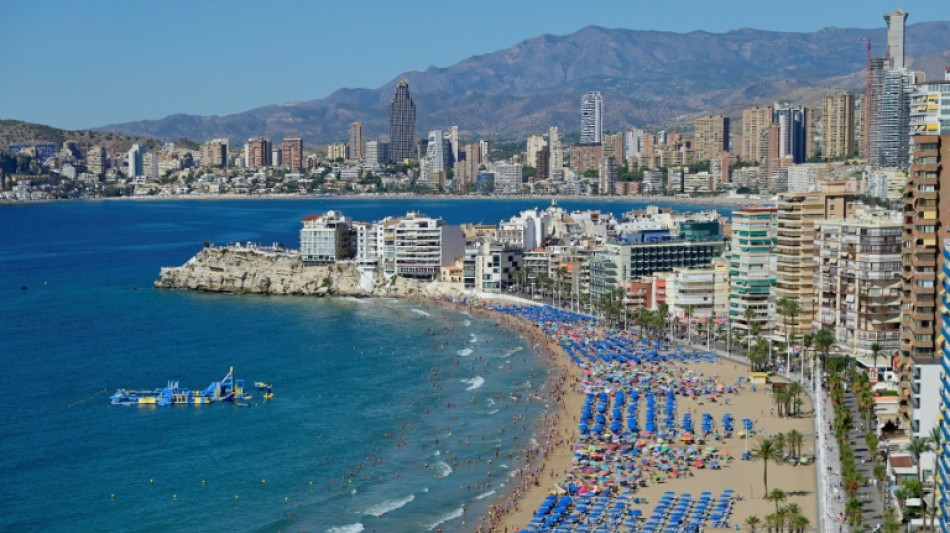
-
 Hamas official says group still needs time to study Trump's Gaza plan
Hamas official says group still needs time to study Trump's Gaza plan
-
Goffin beats Shelton in first Shanghai Masters shock

-
 Ton-up Rahul, Gill steer India into lead in West Indies Test
Ton-up Rahul, Gill steer India into lead in West Indies Test
-
Spain's Benidorm embraces its Franco-era mass tourism model
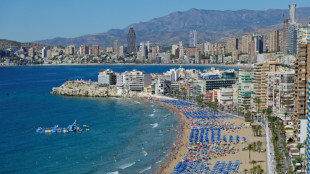
-
 Not all 'A's: Unconventional paths that led to Nobels
Not all 'A's: Unconventional paths that led to Nobels
-
New York judge to sentence Sean 'Diddy' Combs after blockbuster trial

-
 Typhoon Bualoi death toll in Vietnam tops 50
Typhoon Bualoi death toll in Vietnam tops 50
-
Indonesia free meals programme under fire after thousands sickened

-
 South Korea's Hwang charges into Hawaii LPGA lead
South Korea's Hwang charges into Hawaii LPGA lead
-
Wallabies vow to send Slipper off on a high against All Blacks

-
 Cyberattack halts shipments from Japan's biggest brewer
Cyberattack halts shipments from Japan's biggest brewer
-
Liverpool seek to steady ship, Man Utd's Amorim faces must-win game

-
 Luxembourg gets new Grand Duke with royal abdication
Luxembourg gets new Grand Duke with royal abdication
-
Cambodian ex-MP's killer jailed for life in Thailand

-
 Czechs head to polls with billionaire ex-premier tipped to come first
Czechs head to polls with billionaire ex-premier tipped to come first
-
Taylor Swift moves into 'Showgirl' era with new pop album

-
 Last flotilla boat sails on towards Gaza after Israel interceptions
Last flotilla boat sails on towards Gaza after Israel interceptions
-
Munich airport halts flights after drone sightings

-
 Rookie Schlittler pitches gem, Yankees beat Red Sox to advance in MLB playoffs
Rookie Schlittler pitches gem, Yankees beat Red Sox to advance in MLB playoffs
-
Indonesia school collapse death toll rises to 7: rescue official

-
 China trials 'energy-saving' underwater data centres
China trials 'energy-saving' underwater data centres
-
Tech fans Tokyo rally on broadly positive day for Asian markets
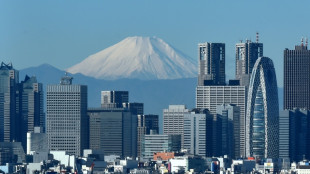
-
 Group leading Morocco protests demands govt dismissal
Group leading Morocco protests demands govt dismissal
-
Virtual Jesus? People of faith divided as AI enters religion

-
 McEvoy calls on World Aquatics to make 25m sprint an official event
McEvoy calls on World Aquatics to make 25m sprint an official event
-
Australian drug kingpin to face retrial in police informant scandal

-
 Staniforth predicts All Blacks honours for 'freak' Manu before Top 14 match-up
Staniforth predicts All Blacks honours for 'freak' Manu before Top 14 match-up
-
AC Milan face Scudetto rivals Juve after landmark San Siro ruling

-
 Tensions rising at Real Madrid before Villarreal test
Tensions rising at Real Madrid before Villarreal test
-
Top four face off in early Bundesliga litmus test

-
 Could PSG finally be there for the taking in Ligue 1?
Could PSG finally be there for the taking in Ligue 1?
-
South Africa eye back-to-back Rugby Championship crowns

-
 Sean 'Diddy' Combs asks judge for 'mercy' ahead of sentencing
Sean 'Diddy' Combs asks judge for 'mercy' ahead of sentencing
-
FIFA unveils Trionda, the official ball of the 2026 World Cup

-
 Higgo in four-way tie for PGA Tour lead in Mississippi
Higgo in four-way tie for PGA Tour lead in Mississippi
-
New Zealand eruption survivors tell of horror on first day of inquest

-
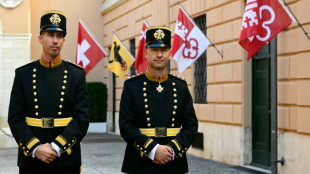 Put the bright stripes away, Pope's Swiss Guards get new garb
Put the bright stripes away, Pope's Swiss Guards get new garb
-
New setback for Milei as Argentine Congress overturns spending vetoes

-
 Canada reports first death linked to measles epidemic
Canada reports first death linked to measles epidemic
-
Lille goalkeeper saves three penalties in Europa League win

-
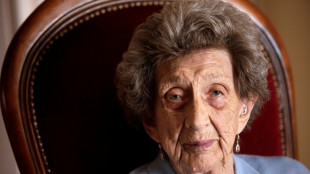 Frenchwoman who escaped Nazi massacre dies aged 100
Frenchwoman who escaped Nazi massacre dies aged 100
-
US regulator approves new generic abortion pill, conservatives outraged

-
 'Resentment': Synagogue attack shocks Manchester Jewish community
'Resentment': Synagogue attack shocks Manchester Jewish community
-
Villa win in Europa League as Forest and Scottish clubs lose

-
 US farmers hit by trade war to get 'substantial' aid: Treasury chief
US farmers hit by trade war to get 'substantial' aid: Treasury chief
-
'Terrorist attack' on UK synagogue kills two: police

-
 Trump declares 'armed conflict' with drug cartels
Trump declares 'armed conflict' with drug cartels
-
Pulisic, McKennie headline US squad for October friendlies

-
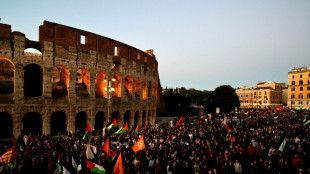 Rallies against Israel interception of Gaza flotilla sweep Europe
Rallies against Israel interception of Gaza flotilla sweep Europe
-
Trump ally threatens immigration sweep at Bad Bunny Super Bowl show


Spain's Benidorm embraces its Franco-era mass tourism model
Fifty years after General Francisco Franco's death, Benidorm still clings to the mass tourism model it pioneered under his dictatorship, even as protests against overtourism sweep other Spanish holiday hotspots.
Built on bikinis, skyscrapers and package holidays, the industry reshaped socially conservative Spain's image abroad and brought in much-needed foreign currency.
"There are no car factories here, no soap factories. What we have is a factory of hotels, restaurants and businesses that make our visitors happy," said Angela Barcelo, 72, the owner of the Hotel Les Dunes in the Mediterranean beach resort.
Her grandmother opened it in 1957, when Spanish women needed their husband's permission to open a bank account.
"What Benidorm is today is thanks to the women," Barcelo said, recalling how local men were often away at sea while women managed the family assets and opened many of the first hotels and guesthouses.
A former seafaring village of whitewashed houses and just 3,000 residents, Benidorm has mushroomed into a city of more than 100 skyscrapers whose population swells to 400,000 on peak August days.
This transformation was the work of Pedro Zaragoza Orts, Benidorm's mayor from 1950 to 1966 and an enthusiastic supporter of the ultranationalist Falange movement that backed Franco's rule.
He saw foreign tourism as a safer alternative to seafaring, which had claimed the lives of many of his relatives, or farming.
- Bikinis and gay bars -
When foreign women began arriving on the beaches in bikinis, Spain's influential Catholic Church, which was closely aligned with the dictatorship, pushed back.
The bishop of the nearby city of Alicante clashed with Zaragoza, who faced the threat of excommunication, which carried significant social stigma at the time.
Franco himself tipped the scales when he sent his wife and daughter to holiday several times at Zaragoza's home in Benidorm -- a gesture widely seen as a blessing.
Zaragoza was also very socially conservative but he realised Spain needed to open up, historian Francisco Amillo, 76, who has lived in Benidorm for decades, told AFP.
"The income from foreign currency multiplied exponentially" once bikinis were allowed on beaches, he added.
Zaragoza proved adept at publicity stunts, inviting a family of the Sami people from Finland's Arctic region for a holiday that drew Nordic media coverage.
He also launched the Benidorm Song Festival, where Grammy Award-winning Spanish crooner Julio Iglesias began his career.
By the early 1960s, gay bars also appeared in the town, offering a refuge during Franco's authoritarian rule.
- 'Like New York' -
Zaragoza's model of selling sea and sun worked and was extended to other parts of Spain, which received some 94 million foreign visitors last year, making it the world's second most-visited country behind France.
Some 2.8 million of those foreign tourists headed to Benidorm, packing its seven kilometres (four miles) of wide, sandy beaches.
Criticised for decades for its high-rise skyline and dense crowds, in recent years it has been hailed as a model of sustainable tourism.
Concentrated housing occupies less land, minimises water loss, allows for quicker waste collection and reduces the need for cars, said the deputy chief engineer at Benidorm's city council, Vicente Mayor.
"Although tall buildings and urban density have been looked down upon, vertical growth is a very efficient model," he added.
Visitors remain loyal.
"It's got something for everybody. It's brilliant. It's got the bars, the madness down the strip. And it's got lovely tapas bars in the old town," said Stuart Reed who was visiting with his wife from Britain.
Others bristle at its reputation.
"When I tell friends I'm going to Benidorm, they say: 'What a horrible city!'" said Maribel Soler, a 68-year-old Frenchwoman.
"But that's because they don't know it. They've never been. They only judge the buildings," added Soler, who compared Benidorm to New York.
"And I love New York," she said.
F.Wagner--VB

